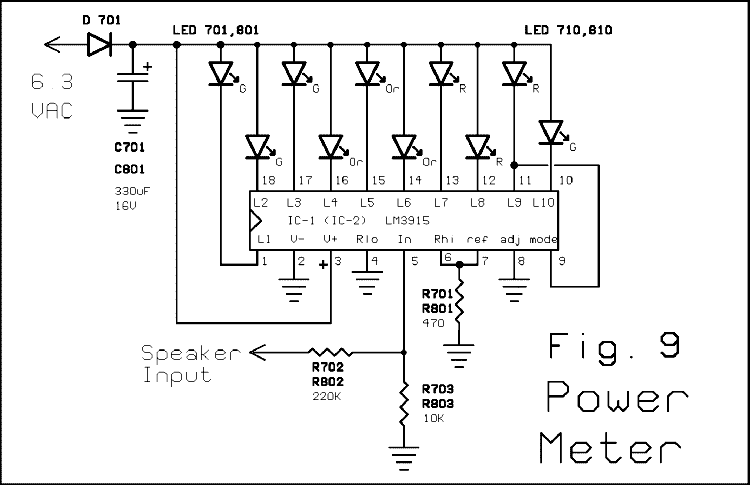A HI-FI VACUUM TUBE AMPLIFIER
by Fred Nachbaur, Dogstar Music ©1998, 2000
3E: POWER METERS
After all that, the peak-output power meters are almost trivial. Aside from the rectifier diodes and
regulator transistors in the power supply, it's our sole concession to solid-state technology. The
meter is a basic application of the popular LM3915N LED bar-graph display driver, which shows
output power (assuming an 8-ohm speaker system) in 3 dB steps from 200 mW to 100 watts.
Note that this represents Peak power, the equivalent RMS power will be one-half of the peak
value (for sine wave input). If the last light (representing 100 watts peak) lights too frequently,
this is your cue that you're pushing the amplifier to its limits, and you'll start hearing signal
degradation due to clipping.

Fig. 9: Peak Power Meters
The power requirements for the LED's and display driver are derived from a simple half-wave
rectifier and filter, sourced from the 6.3 volt filament winding of our power transformer. Power
requirements are very modest (under 20 milliamps under normal conditions) so this little frill
doesn't cost us much in terms of resources.
Figure 9 shows the schematic of this simple yet impressive feature. (Can you imagine trying to
implement something like this using tubes? The mind boggles...) Note that R702/802 is shown for an 8-ohm
load. For 4 ohms, reduce to 160K; for 16 ohms, increase to 330K.




